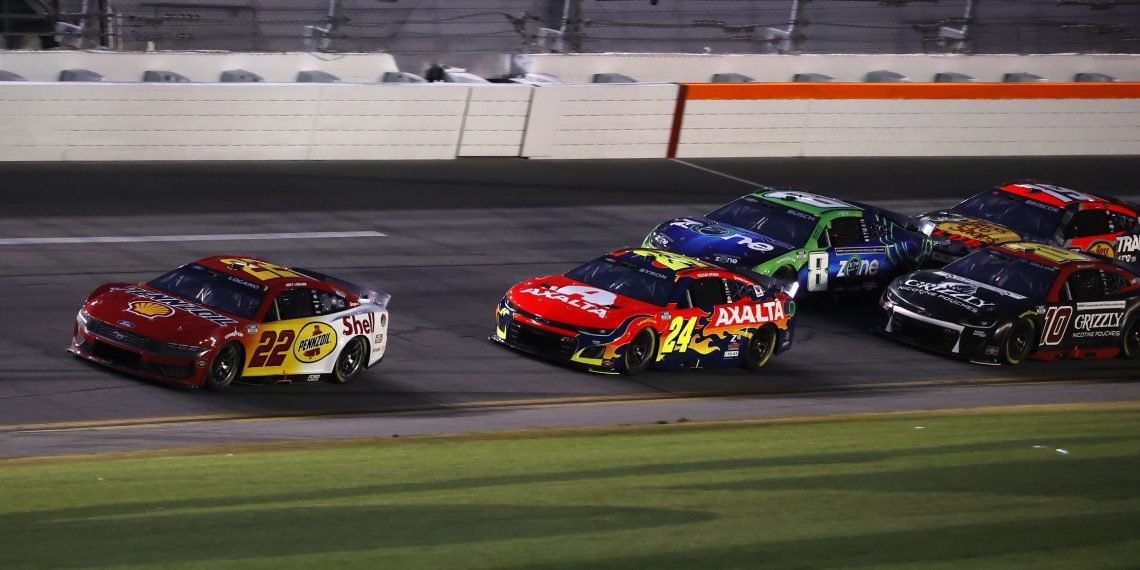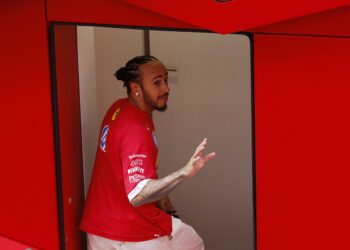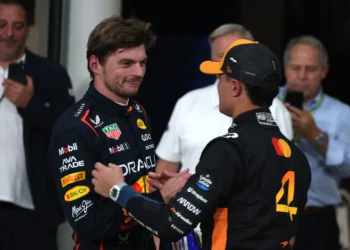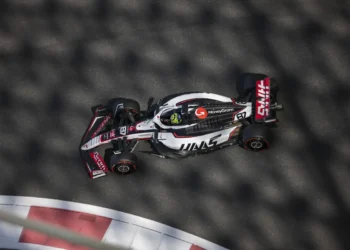In the chaotic theater that is the Daytona 500, where every inch of asphalt is fiercely contested and one move can mean victory or disaster, Joey Logano found himself in the crosshairs of controversy. His aggressive lane change with eight laps to go ignited a multi-car pileup, dashing the hopes of Kyle Busch, Chase Elliott, Ryan Blaney, and others—while reigniting the never-ending debate on whether superspeedway racing rewards skill or sheer survival.
Was Logano making a necessary move for victory? Or did desperation push him into a reckless decision that cost others a shot at glory?
The Move That Changed Everything
With the laps winding down, Logano saw an opening—a sliver of daylight to maneuver himself into the perfect spot for a final push to victory. But as he lunged for position, Ricky Stenhouse Jr. threw a block, leading to a domino effect that spiraled out of control.
In a split second, Logano’s No. 22 Ford tangled with Stenhouse, and the field behind them exploded into chaos. Kyle Busch, an unfortunate bystander in the wreck, had no room to escape as his No. 8 Chevy was swallowed up in the carnage. Chase Elliott and Ryan Blaney suffered the same fate, turning what had been a finely-tuned race into a twisted mess of metal and frustration.
The aftermath? Fury from the NASCAR garage.
Kyle Busch and Jeff Gordon Rip Logano’s Judgment
Kyle Busch did not mince words.
“You’ve got to know how wide your race car is to be able to find a hole that it’ll fit in, and he obviously doesn’t know that.”
Busch, still chasing his first Daytona 500 victory, had positioned himself as a serious contender—only to see his dream evaporate in a flash. His assessment? Logano got impatient and made a move that didn’t need to happen.
Jeff Gordon, now an executive at Hendrick Motorsports, was just as blunt.
“Joey did,” Gordon answered when asked whether people made dumb moves in the closing laps.
The sentiment in the garage was clear: Logano’s aggression had crossed the line.
Logano Stands His Ground: “I Had No Choice”
Unfazed by the criticism, Joey Logano defended his move, claiming it was a calculated attempt to position himself for the win.
“I felt like I had to get to the second car in line to have a chance to win the thing. I had an opportunity to get down in front of the Ford, but the No. 47 (Stenhouse) had a lead block. At that point, I was kinda indecisive. I was trying to back out, but I was getting shoved into it as the check-up had already happened.”
In Logano’s mind, it was simple: this was the Daytona 500—hesitation was not an option. His argument was that once the accordion effect took over, there was no way to avoid what happened.
But to the victims of the wreck, that explanation was hollow.
Did Logano Cost Busch His Best Shot at Daytona Glory?
If there’s one driver who knows the pain of coming close at Daytona, it’s Kyle Busch. The two-time Cup Series champion has done nearly everything there is to do in NASCAR, but the Harley J. Earl Trophy remains elusive.
And this year? He was in position to change that.
Busch, still fuming post-race, took one final jab at Logano:
“The fastest car got in a hurry to get to the wreck.”
For Busch, this wasn’t just another crash—it was a preventable disaster that stole a chance at history.
The Daytona Debate: Skill vs. Survival
Logano didn’t win the Daytona 500, but he walked away with a Stage 1 victory and a playoff point, while William Byron survived the wrecks to claim his second consecutive 500 win.
But what does this race truly prove anymore?
- Is the Daytona 500 still a race that rewards skillful strategy and execution?
- Or has it become a superspeedway lottery, where the winner is simply the last one left standing?
As NASCAR grapples with the evolution of its most historic race, one thing is clear—Joey Logano’s move won’t be forgotten anytime soon. Whether it was a racer’s instinct or a reckless decision, the 2025 Daytona 500 will forever be marked by the moment that turned contenders into casualties.
And for Kyle Busch, the wait for Daytona glory just got even more excruciating.










